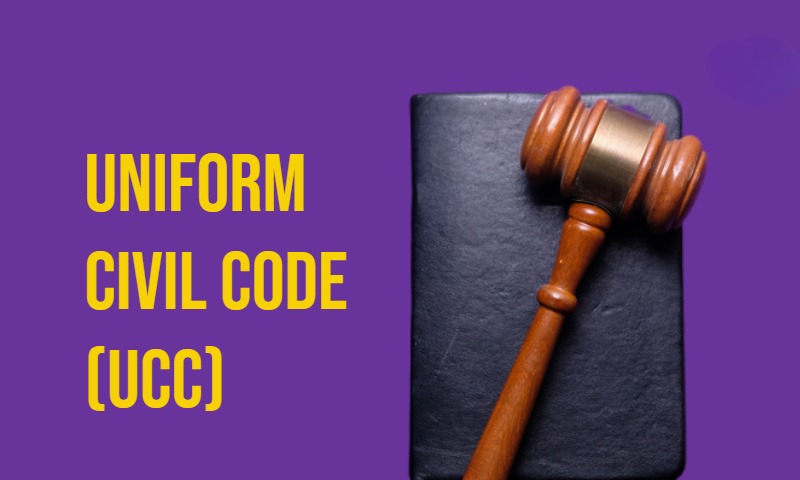The Complexity of Uniform Civil Code (UCC) and Bursting the Myths of Homogeneity
Context:
The article discusses the intricacies and complexities surrounding the concept of the Uniform Civil Code (UCC) in India and emphasizing the importance of embracing diversity and equality to navigate the complexities of the UCC and Indian secularism successfully.
Relevance:
GS-02 (Indian Polity- Fundamental Rights, DPSP)
Prelims:
- Uniform Civil Code
- Fundamental Rights
- Law Commission
- Directive Principles of State Policy.
Dimensions of the Article:
- The Ideological Agenda: Decoding the BJP’s UCC Pursuit
- Entangled Threads: Caste Inequalities and the UCC Conundrum
- Embracing Multiculturalism: UCC and Gender Equality
- Unraveling Muslim Personal Law
- The Struggle for Reforms
- Gender Justice and AIMPLB: A Tumultuous Relationship
The Ideological Agenda: Decoding the BJP’s UCC Pursuit
- Prime Minister Narendra Modi’s recent advocacy for the implementation of a Uniform Civil Code (UCC) in Bhopal raised eyebrows and questions alike.
- The BJP’s unwavering commitment to three core ideological agendas – the abrogation of Article 370 and the construction of the Ram Mandir being the other two – adds fuel to the intrigue.
Entangled Threads: Caste Inequalities and the UCC Conundrum
- The fate of India’s relentless pursuit of egalitarianism hinges upon resolving two closely intertwined questions: Why should Hinduism perpetuate a rigid four-caste system, with some groups asserting dominance over others, especially the marginalized Dalits? And, in a nation akin to a family, can disparate laws for various communities coexist harmoniously?
- As we delve into the UCC discourse, it becomes evident that the Hindu Right’s enthusiasm for uniformity overshadows concerns over caste inequalities, leaving us pondering over their true motivations.
Embracing Multiculturalism: UCC and Gender Equality
- Beyond the borders of India, many Western liberal democracies grapple with the paramount issue of gender equality, an essential pillar of the UCC. France’s courts frequently encounter cases involving Muslim immigrants from Morocco and Algeria, while Canada, Australia, and the U.S. resort to religious-based alternative dispute resolutions.
- The mosaic of multiculturalism offers valuable lessons for India as it navigates the treacherous waters of gender justice.
Unraveling Muslim Personal Law:
- The All India Muslim Personal Law Board (AIMPLB) came into existence in 1973 with the primary mission of safeguarding Muslim personal law. This history stretches back to 1772 when colonial rulers utilized religious doctrines to shape personal laws.
- Acts like the Muslim Personal Law (Shariat) Application Act, 1937, and the Dissolution of Muslim Marriage Act, 1939, lay the groundwork for Muslim personal law.
- Recent developments, such as the passage of the triple talaq bill in 2019, have sought to bring about substantial changes.
The Struggle for Reforms:
- While some advocate internal reforms within the Muslim community, progress has remained sluggish. Muslim women activists have long knocked on the doors of community leaders, imploring for reforms and the codification of Muslim personal law.
- Surprisingly, during Nehru’s era, other Muslim-majority countries like Jordan, Syria, Tunisia, and Pakistan undertook reforms based on The Ottoman Law of Family Rights, 1917. Alas, in independent India, the lack of independent Muslim leadership has impeded any substantial efforts for internal reforms.
Gender Justice and AIMPLB: A Tumultuous Relationship
- The AIMPLB’s image as an all-male body has come under heavy criticism, particularly since the Shah Bano case.
- While facing mounting pressure, the board has reluctantly allowed limited representation of women.
- However, the push for codification of family law and broader personal law reforms remains stagnant, leaving many feminist and Muslim women’s groups disheartened.
Conclusion:
The path to a Uniform Civil Code in India is fraught with complexities and contradictions, embodying a crisis of Indian secularism. The delicate balance between gender justice and interpretations of religious texts complicates matters further. As we chart this uncharted territory, our choices must embrace multiculturalism, unity in diversity, and a genuine pursuit of gender equality. Only then can we usher in an era of true egalitarianism, transcending the artificial boundaries of majoritarianism.





